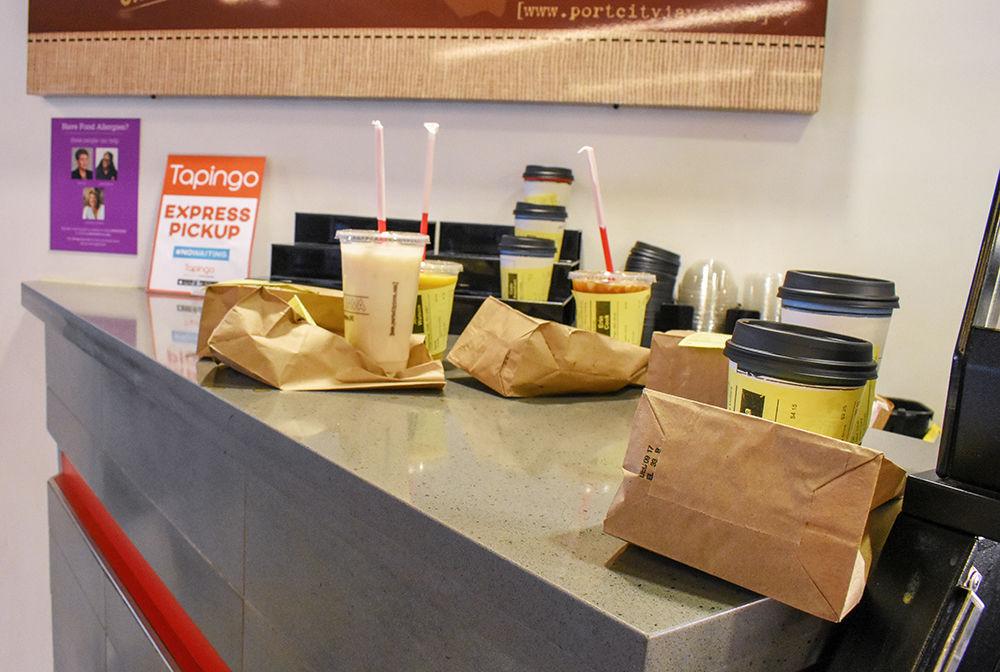The mobile food ordering service Tapingo is expecting updates in the near future to keep up with a high volume of users on NC State’s campus.
Tapingo has been on NC State’s campus for about three-and-a-half years and has exceeded expectations of usage. Randy Lait, senior director of hospitality services, was a leading staff member in the implementation of Tapingo into NC State’s dining experience and still works to improve the service today.
“At the time [of implementation], the people from Tapingo discussed that we would probably do somewhere between three and, if we were really successful, 10 percent of our orders would come from Tapingo,” Lait said. “We now reached a point where 40 to 50 percent of orders coming into the dining locations are using Tapingo.”
However, the unexpected success of Tapingo exposes shortcomings of the programming of the application.
“The way Tapingo works is that it will allow really an unlimited number of people to order at the same times, and it spaces the orders apart by the amount of time it should take to make the products being ordered,” Lait said. “If you get 30 people ordering from Port City Java at the same time, those orders will be spaced two minutes apart and so the last order won’t really be ready for an hour.”
Lait and his team are not letting these problems be overlooked. Engineers from Israel and San Francisco recently visited the campus to observe flaws in the Tapingo system and suggest ways to improve it.
“We’re talking about changes that we can tell you that your bag of food is going to be in spot number seven and have a little shelf unit with numbered spaces, so you don’t have to rummage through and try to find your order,” Lait said.
Many students have enjoyed the use of the application for easy food pick-up. Hunter Graham, a first-year studying biology, applauds the convenience of the mobile application.
“I’ll be on my last set of whatever I’m doing [at the gym] and then I’ll order something to eat so that way I don’t have to go stand in line after I get out,” Graham said. “I go run by and get my food so when I’m done showering, I have my food waiting for me.”
Hannah McGinley, a first-year studying engineering, has a similar appreciation of Tapingo’s convenience.
“I think it’s a great system,” McGinley said. “I definitely don’t know what I’d do without it.”
Another interesting feature to look out for in the food ordering service’s future is kiosk ordering.
“There’s a couple schools that are experimenting with eliminating the register, or at least eliminating the cashier, and everyone orders on a device,” Lait said.
In addition to features like shelving and kiosks, there will be changes to the actual programming of Tapingo. The changes are not going to necessarily make service faster, but they will make how long an order will take to be filled clearer to allow customers to choose if they have time to wait.
“We’ve been playing with programming in the app that will be released in the next few weeks that will allow us to control the number of orders that can be accepted for a unit within a particular amount of time,” Lait said. “This will allow us to match our operating capacity.”
Tammy Bullock, general manager of campus cafes, is a part of the staff working to understand and improve Tapingo to benefit customers and employees of dining locations.
“NC State is leading the country in adoption and use of this Tapingo app, so it’s important to us that we continue to refine so we can meet the needs of the guests,” Bullock said.
Lait also confirmed that the correct pronunciation of the application’s name is ‘tuh-PING-go’ and not ‘TAP-in-go’. Students can find Tapingo participating campus locations on the NC State Dining website.








